Smoke is the traditional way to keep bees calm, and beekeepers have been using this method for many centuries. Even so, there are many reasons for not wanting to use smoke around your farm or homestead. In this article, we discuss some alternate and safer methods for keeping your bees calm (including the video below). We also compare and contrast these methods with use of smoke. Read on to learn more on how to calm bees without smoke.
What You'll Learn Today
- Why Keep Bees Calm?
- How Does Smoke Calm Bees?
- Is Smoke At All Necessary?
- Sugar Water Spray Helps New-Bees Settle In
- Essential Oils Are Naturally Calming
- Use A Bee Manipulation Cloth
- Be Calm For Calm Bees
- Dress For The Occasion
- Handle Bees With Care
- Don’t Throw Your Smoker Out
- Create A Balance By Using A Combination Of Methods
- What Kind Of Weather Is Best For Handling Bees?
- Timing Matters
- Keep All Your Beekeeping Options On The Table
- Frequently Asked Questions
- Q: How does smoke affect bees, and why is a bee smoker used?
- Q: What kind of protective clothing and equipment should beekeepers wear?
- Q: Why is the correct protective clothing and equipment so important in beekeeping?
- Q: How should beekeepers handle bee stings?
- Q: What should you do if a bee gets inside your veil?
- Q: Are there special safety considerations for beekeepers working in hot weather?
- Q: How can beekeepers prevent back injuries when lifting heavy hives and equipment?
Why Keep Bees Calm?
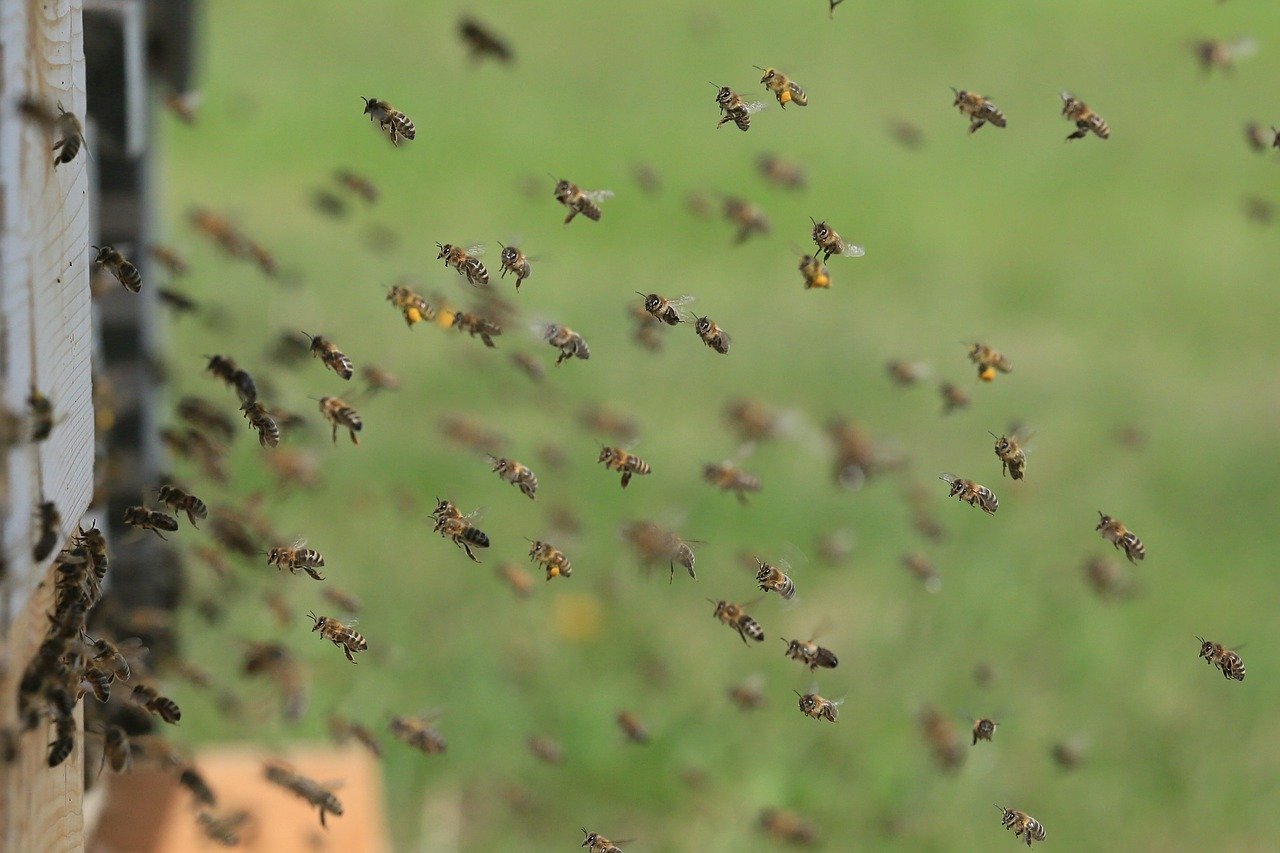
In beekeeping, there are a number of tasks you must perform. For example, you need to gather frames to harvest the honey.
You must perform frequent inspections to make sure that your bees are healthy. If damage has been done to the hives, you must make repairs.
Unfortunately, interacting with your bees can be stressful for them. Stress and anxiety can lead to stings, so it’s absolutely necessary to be able to calm your bees when you need to work with them.
How Does Smoke Calm Bees?
When you use smoke to calm your bees, it stimulates the bees to gorge on nectar or honey. This distracts them so that you can work with the hive.
During honey extraction, using smoke may cause conflicts with bees trying to gorge on honey and you trying to collect it. Additionally, many beekeepers worry that smoke negatively impacts the flavor of the honey.
For this reason, when collecting honey, using sugar water is an excellent alternative to smoke. A light misting of sugar water will cause the bees to get busy cleaning themselves off so that you can get on with your beekeeping chores.
Don’t smoke your bees! Do this instead (Video)
Is Smoke At All Necessary?
In natural beekeeping, smoke is not used at all. Instead, they prefer to simply stay calm and handle their hives without using a smoker.
Even if you do not consider yourself a natural beekeeper, if you live in a hot, dry climate, or if you are experiencing drought, you may choose not to use a smoker because you don’t want start fire.
If you are beekeeper with asthma or other sensitivity to smoke, naturally you will want to choose alternatives more often than not.
There are a number of recipes that you can use to create your own bee calming spray. Some just use sugar and water, and others use various essential oils. One very simple recipe involves combining one part sugar and three parts water.
Calming spray is easier to use than smoke in many ways because you don’t have to set anything on fire or keep it lit when you use it. All you need to do is mix it up and fill a spray bottle.
Sugar Water Spray Helps New-Bees Settle In
When you receive a new package of bees, using a water and sugar spray can help calm them down before you put them into their new hive.
A smoker is not usually good in this instance because if the bees are afraid that there is fire because of the smoke, they may fly away.
Bees like sugar water, and when they find themselves lightly coated with it they begin cleaning it off. While we’re busy doing this, they can gradually become accustomed to new surroundings.
It’s not really much of a stretch to believe that having tasty sugar water upon arrival will help them feel welcomed and at home.
Essential Oils Are Naturally Calming
You can also make a calming spray using spearmint essential oil and lemongrass essential oil. Just half a dozen drops in a quart spray bottle can work wonders.
When spraying your bees with an essential oil mixture, take care not to soak them. Instead, spray your concoction around on the inner walls of the beehive. With oils, scent is what calms them, not the moisture.
Use A Bee Manipulation Cloth
You can also use a calming cloth to calm bees. To do this, you would carefully and calmly open the hive and then lay a cloth over the top of the bee box.
For added calming effect, you may want to spray or soak the cloth with your essential oil or sugar mixture.
The cloth works by keeping the bees protected and in the dark during your inspection. This can help keep them calm and happy.
When the bees are covered, they will not be able to hover around the top bars of the hive. Instead, the cloth will hold them gently close to the bottom part of the hive.
Another advantage of using of the cloth is that it protects the bees. It will keep them from becoming accidentally crushed.
There are special beekeeping manipulation cloths that you can buy from a beekeeping supply store, but you can also just use fresh, clean towels or rags.
Be Calm For Calm Bees
With or without a calming agent, there are ways that you should behave when you are handling bees. Begin by staying calm.
When you are anxious, your anxiety is spread to the bees. If you are afraid, they will give you a good reason to be.
When working around bees, stay calm, move slowly and quietly and don’t make noise. Vibrations will upset them. Pay attention to what you are doing.
Don’t wave your arms around in the air, and don’t become distracted by other people, your cell phone or anything else. Focus on the task at hand.
Control your breathing and thus your heartbeat. Breathe regularly through your nose. Breathing through your mouth may cause your bees to think of you as a predator.
Take care not to sigh, blow out forcefully or otherwise fill the air with carbon dioxide.
Examine your surroundings to make sure that everything is calm before opening a hive. If you see that others are active around you at tasks such as mowing, plowing, playing games or any other vigorous activity, you may want to reschedule your hive chores.
Dress For The Occasion
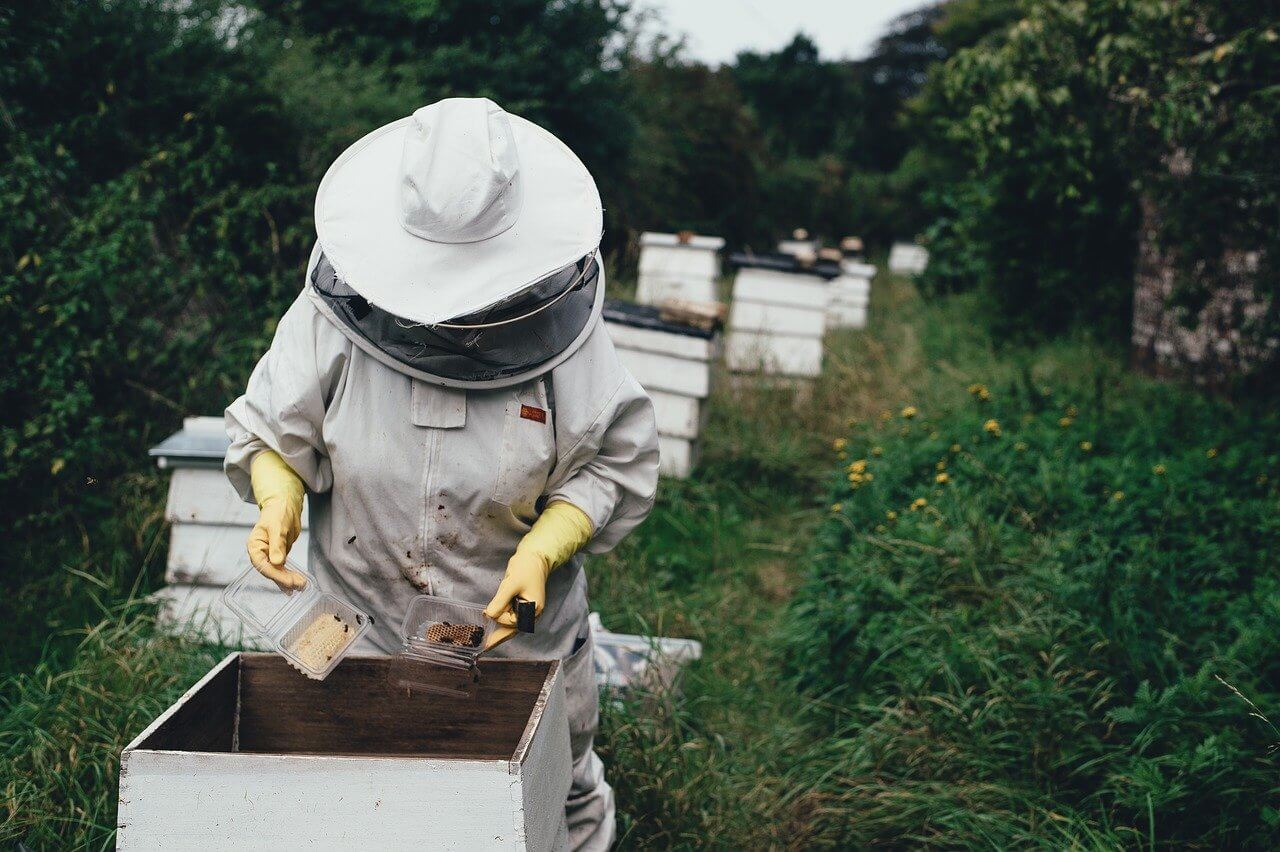
There is a reason why beekeeping suits exist. Not only do they provide you protection, they provide you with sense of calm. If you know that the bees can’t sting you, you’re more likely to stay calm.
If you decide that you do not want wear a beekeeping suit, choose your clothes correctly. Bees do not like dark colors, and they may become quite alarmed if you do your chores wearing dark colored clothing.
Instead, wear light colored clothes with very little contrast. All white, all tan or beige are good choices.
Additionally, you may be surprised to learn that your clothes must be clean. No matter what you’re wearing, wash it before you handle your bees.
This is especially important if you have been inspecting other beehives. Smelling other bees on your clothing can cause your bees to be agitated.
Additionally, you should not save one suit just for beekeeping and not wash it in between inspections.
If bees land on your beekeeping suit and sting the fabric, they will leave alarm pheromones which they will smell the next time you come to the hive.
For this reason, it’s very important that you wash your beekeeping clothes immediately after completing your tasks.
If bees sting while you’re handling them, you can dilute the smell of the pheromones as you work by using a smoker or by using essential oils such as peppermint.
Just as you should handle your bees wearing clean clothes, you should also be clean, yourself.
Although bees are often attracted to the scent of fresh sweat and the minerals it contains, they do not like smell of old, dried sweat.
For this reason, you should always shower before putting on your clean beekeeping outfit and tending to your bees.
Handle Bees With Care
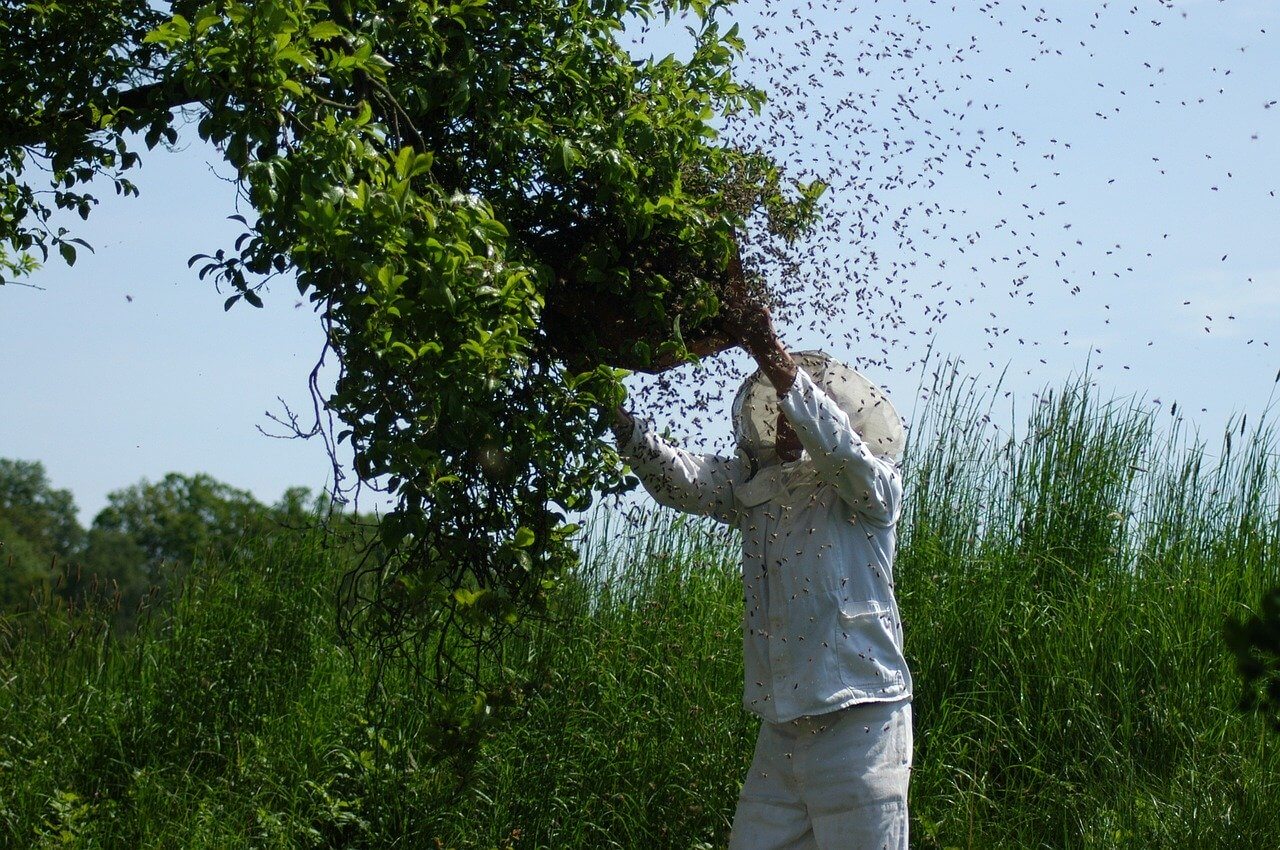
You must be very careful not to accidentally crush any bees while you’re working with them because this will cause them to release alarm pheromones in high levels.
The smell of these pheromones will cause of the bees in the colony to go on alert become defensive.
This is yet another reason to move about slowly and carefully. Wear formfitting gloves, or none at all, so you do not accidentally drop things or bump into and crush bees.
Don’t Throw Your Smoker Out
Even if you have decided not to use a smoker, it’s a good idea to have one. Smoking is a tried-and-true method of be calming, and you may have to use it if an emergency arises.
There are some instances when these alternate methods just don’t work. For example, if you are adding a new queen to the hive, it’s best to go ahead and use smoke. The smell of smoke effectively masks the new queen’s pheromones.
The smoke will disperse gradually, and the odor of the new queen will slowly permeate the hive. This sets up an easy transition.
Likewise, any time you are combining hives or splitting hives, you are better off using smoke. This provides absolute calm that protects the bees during these major disruptions.
Remember that when you are combining or splitting hives, there may be lots of vibrations and noises. This can cause a great deal of anxiety and aggression. Using a smoker will help the bees stay calm and inside the hive.
Create A Balance By Using A Combination Of Methods
It’s important to understand that excessive use of smoke will upset bees because they are as afraid of fire as we are.
Furthermore, when you use smoke, the queen may hide, and you may accidentally crush her while working with your bees. This will essentially destroy your bee colony.
Even so, eliminating use of smoke can be detrimental. For example, when you use sugar water spray, you must open the hive before you begin spraying.
Smokers have an advantage in that you can begin using smoke before opening the hive. This means that when you do open the hive, the bees are already calm.
When you open the hive to use sugar water, some bees may fly away and then come back in a rather defensive mode.
To avoid this, you can just use a small application of smoke to calm your bees before opening the hive and then use sugar water while working with the bees.
What Kind Of Weather Is Best For Handling Bees?
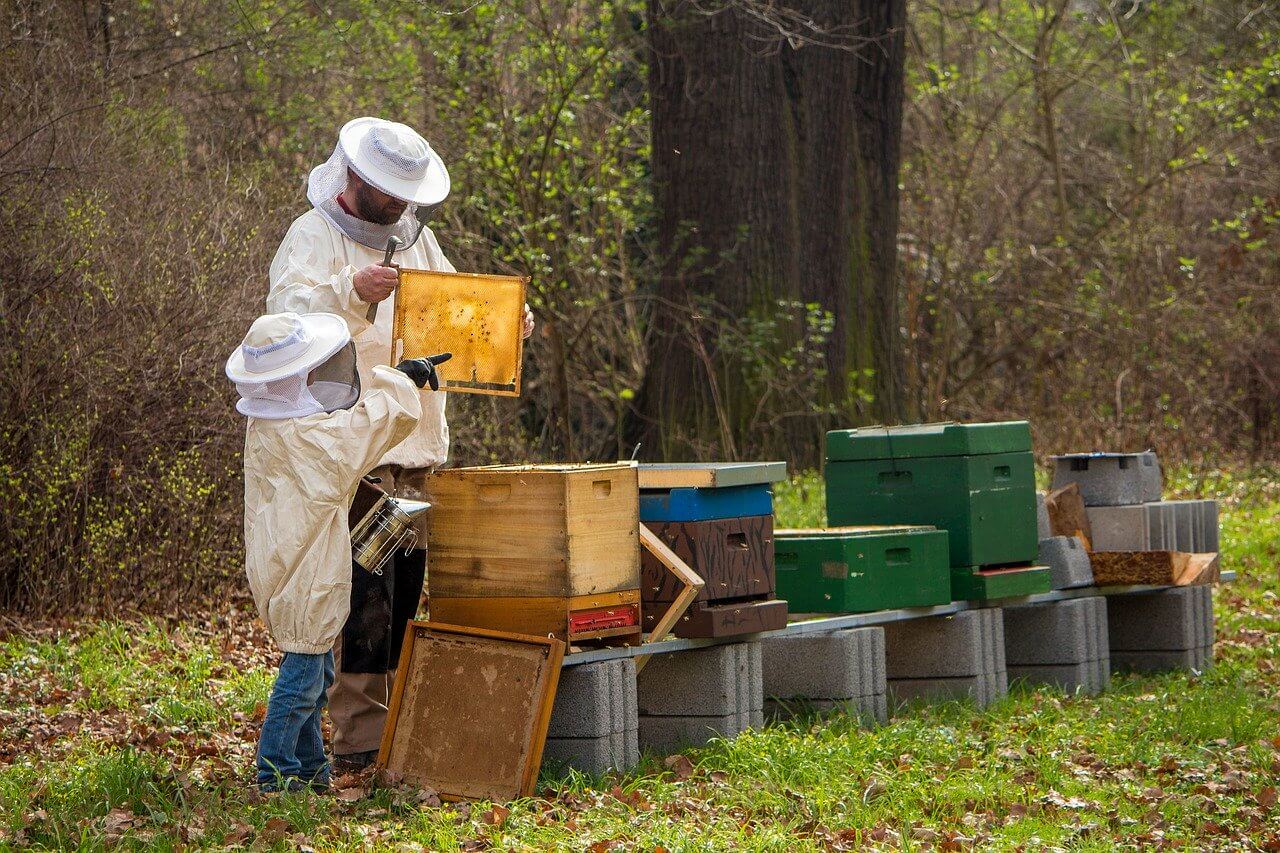
Try to schedule your hive chores for days that are still, sunny and dry. This way, you will not disturb the interior of the hive when you open it.
Naturally, bees do not want an intrusion of cold or hot drafts, rain or snow in their hives. The best temperature is about 85°F because this is the ideal temperature inside the hive.
Remember to check your local weather forecast for the week ahead when you plan your beehive chores.
Check again for the day’s hourly forecast to determine the precise moment to work with your beehives.
If rain, and especially thunderstorms are predicted, put off your chore. Bees tend to be extremely stressed by impending bad weather.
In the wintertime, you’ll find your bees are quiet and calm. They will huddle together in a cluster to keep warm, and they will not want to be broken apart.
For this reason, you won’t need smoke or any other calming agent to manage them during winter.
Timing Matters
When handling bees, the time of day has a great deal to do with how calm they are. No matter what sort of calming agent you choose to work with your bees, you should always keep time of day in mind.
Early in the morning or at dusk bees are coming going, they can be somewhat defensive. That’s why midmorning is the preferable time to work with your hive.
At midmorning, bees are out and about, foraging for pollen, and you may find the hive nearly empty. Exceptions to this may be rainy days when the bees may stay in.
Keep All Your Beekeeping Options On The Table
There is no right or wrong answer to the question of using a smoker. Every beekeeper and every beehive is different.
Your situation, your environment and your methods will all contribute to the defensiveness of your colony and your success in handling bees with or without a smoker.
In many instances, you may be able to work with no protection at all. In still other instances you may need to smoke heavily.
Always keep your own safety and the safety of your bees in mind, and make the decision whether or not to use smoke on an individual, situation-by-situation basis.
Test out the various methods that we have mentioned here during calm times when your bees are likely to be quiet and easy to deal with.
By doing so, you’ll have a clear understanding of how each method works with your hive. This will help you make the right choice in any given situation.
Frequently Asked Questions
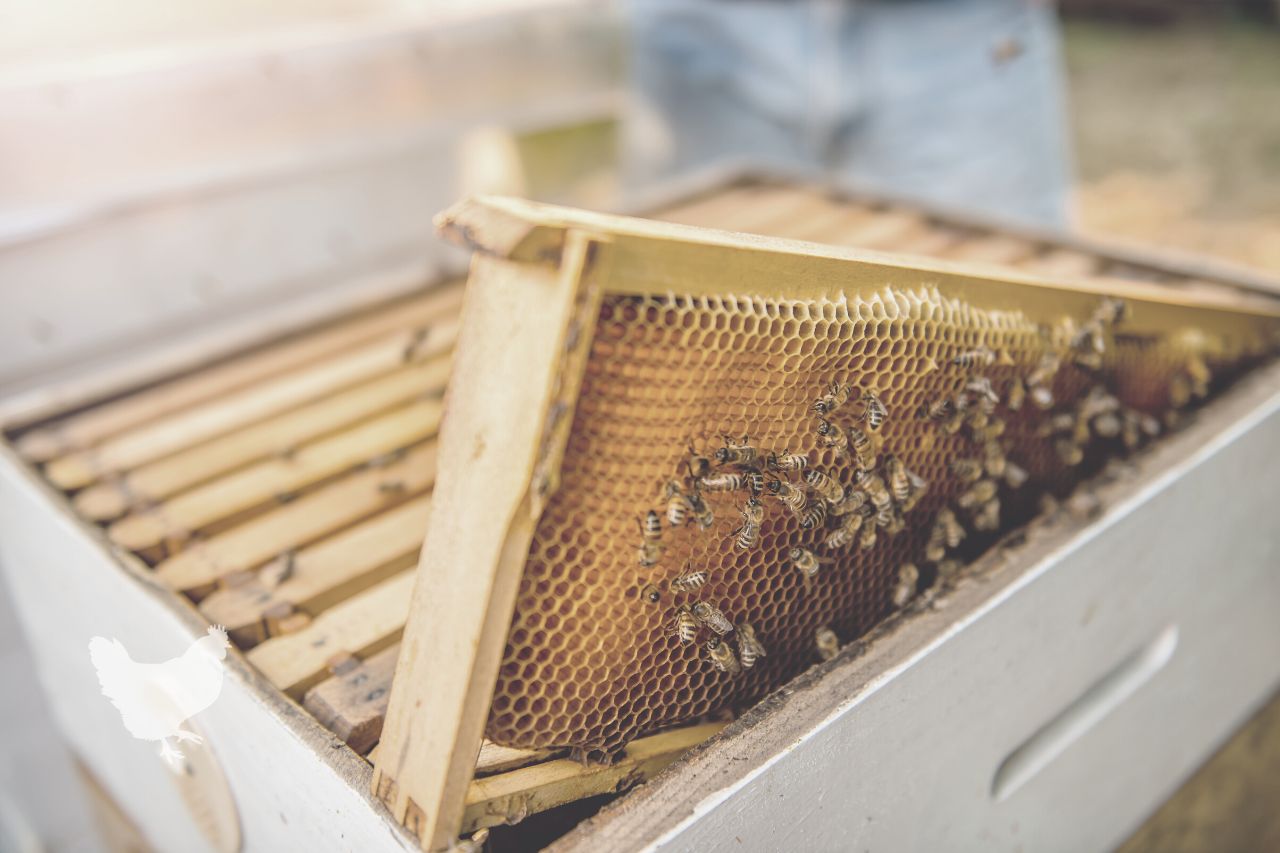
Q: How does smoke affect bees, and why is a bee smoker used?
A: A bee smoker is a tool that beekeepers use to release cool, dense smoke, making bees easier to handle when opening the hive. The smoke stimulates bees to gorge on honey or nectar, and this temporarily disrupts their defensive behavior. There are risks involved, though. It is essential to light the smoker correctly and handle it safely to avoid angering the bees (or setting things on fire!)
Q: What kind of protective clothing and equipment should beekeepers wear?
A: Beekeepers should wear clean, smooth and light-colored protective clothing. Cleanliness is important because there are some odors that bees dislike (e.g. dogs, horses, or diesel fuel). It goes without saying that beekeeping clothes should be in a good state of repair and free of rips, tears and holes that bees could slip through. Common protective gear includes beekeeping hats, veils, coveralls, bee suits, gloves, and appropriate footwear.
Q: Why is the correct protective clothing and equipment so important in beekeeping?
A: Wearing protective clothing is essential to avoid bee stings and ensure safety during beekeeping activities. Bees are sensitive to certain materials and odors, so dressing for success is crucial for calm and safe beekeeping.
Q: How should beekeepers handle bee stings?
A: Getting stung by bees is part of the bargain for a beekeeper, so you should handle it with zero drama. Simply leave the area quietly and remove the sting as quickly as possible to minimize the amount of venom injected. After you’ve removed the stinger, applying cold compresses to the sting can help minimize pain.
Q: What should you do if a bee gets inside your veil?
A: Again, respond with zero drama. It’s important to remain calm if a bee is inside your veil. Move quickly, calmly and purposefully away from the apiary before removing your veil to release the bee. If you have an agitated bee inside your veil, it may be safer to kill it before it has a chance to sting you. Naturally, you should try to keep the bee away from your face during this process.
Q: Are there special safety considerations for beekeepers working in hot weather?
A: Very hot weather can cause bees and other insects to become very active. It can also cause heavily clothed beekeepers to become overheated and dehydrated. Be sure to take extra precautions when working in hot weather. Keep plenty of cool water or electrolyte drinks on hand monitor yourself for signs of heat stress and dehydration. Working with bees during the hottest part of the day or on extremely hot days should be avoided for the well-being of both the beekeeper and the bees.
Q: How can beekeepers prevent back injuries when lifting heavy hives and equipment?
A: Just as when lifting any heavy object, beekeepers should learn and use proper manual handling techniques and, when possible, use mechanical lifting equipment to move hives. This helps reduce the risk of back injuries and ensures safe beekeeping practices.
I do respect nature and never disrupt bees with “unnatural” methods like smoke. If possible, just let them free and your garden will be full of beautiful flowers.